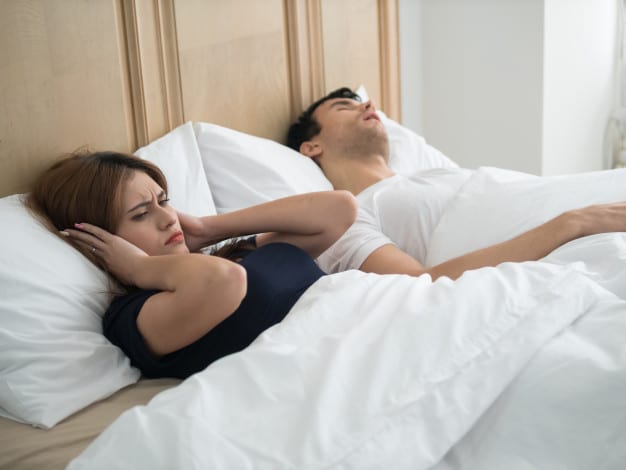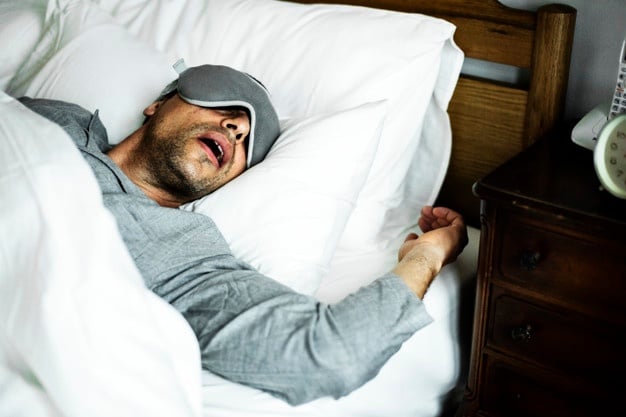Sleep Apnea
Sleep apnea is a very common disease that affects 12 million people in North America. We have compiled some statistics to give you a general idea of the causes and occurrence of this disease.
Sleep apnea statistics
- Men are twice as likely as women to suffer from sleep apnea.
- About 2% of adult women and 4% of adult men have diagnosed sleep apnea.
- For women, the most common factor is menopause.
- When a close family member has sleep apnea, the risk of developing the condition increases.
- 50% of patients treated for sleep apnea are overweight or obese.
- Sleep apnea is more common in people with short, wide necks.
Most people with sleep apnea are not aware of it. It is therefore essential to get tested, even if you are asymptomatic but have signs of sleep apnea.
What is sleep apnea?
Obstructive sleep apnea (OSA) or Sleep Apnea is characterized by complete or partial obstruction of the airway leading to decreases or pauses in breathing during sleep.
When you sleep, the muscles are more relaxed. This includes the muscles that help keep the throat open. Normally, your throat remains open during sleep. However, individuals with narrow throats experience airway collapse during sleep due to muscle relaxation. This results in respiratory pauses called obstructive sleep apnea.
Loud snoring is a symptom of obstructive sleep apnea. Snoring occurs when air travels through a constricted airway, causing the surrounding tissues to vibrate. It is important to note that not all snorers suffer from obstructive sleep apnea.
Causes of sleep apnea
Sleep apnea is caused by the tongue and throat muscles relaxing, blocking the passage of air into the airways. The patient tries to breathe, but the airways are obstructed, which is why it is called obstructive sleep apnea. Elderly people are the highest risk group for these disorders because their throat muscles are less toned. Being overweight is also associated with sleep apnea, as the excess fat in the neck reduces the size of the airways.

What are the main symptoms of obstructive sleep apnea?
The most common symptoms of sleep apnea are daytime fatigue or drowsiness.
However, there are many other symptoms of sleep apnea such as: irritability, morning headaches, difficulty concentrating, night sweats, decreased libido, excessive perspiration during sleep, dry mouth or sore throat, etc.
Often, patients often feel the need to take naps during the day. However, these naps usually have little effect, as they are also fragmented due to repeated breathing breaks.
Sleep apnea: What are the risk factors?
Obesity is not the only cause of obstructive sleep apnea. There are many other factors such as:
- Facial and neck structure (morphology)
- Nasal obstruction
- Respiratory allergies
- Age
- Gender
- Family genetics
- Lifestyle and habits
In addition, alcohol and smoking can increase your chances of developing obstructive sleep apnea.
Do I have sleep apnea?
Sleep Apnea Screening is crucial. We recommend completing a sleep study when there is a suspicion of sleep apnea, to diagnose and treat this disease.
During sleep, sleep apnea is defined by the presence of frequent episodes of complete (or partial) obstruction of the upper airway, responsible for interruptions (apneas) or significant reductions (hypopneas) in breathing.
Any airway restriction, whether in the nose, mouth or throat, can contribute to sleep apnea.
If I snore, does that mean I have sleep apnea?
About 40 percent of adult men and 24 percent of adult women are habitual snorers. However, not all of them have sleep apnea.
A spouse will often witness their partner’s signs of sleep apnea. These signs include snoring, respiratory pauses and more. If you suspect you or a loved one may be suffering from sleep apnea, talk to your physician about it.
Sleep apnea: when to consult a doctor?
People suffering from sleep apnea do not always know. Most of the time, a partner is the first to notice the signs of snoring and sleep apnea. It is advisable to consult a specialist when:
- Snoring disrupts your sleep and/or your partner’s sleep.
- Snoring often wakes you up at night.
- Your partner notices you are having respiratory problems.
- You feel tired in the morning and sleepy during the day
The Epworth Sleepiness Test measures how drowsy you are during the day.
Speak with one of our doctors to understand if a sleep study should be completed.
A complete examination called polysomnography can be performed at our clinic. This test analyzes the different phases of sleep and measures several indicators to detect sleep apnea and assess its severity.
This laboratory sleep test requires an overnight appointment in the clinic. Electrodes are placed on the body in order to observe physical activity such as brain or muscle activity, the oxygen level in the blood and the different phases of sleep.

What to do to limit sleep apnea aggravation?
If you suffer from sleep apnea, simple measures can be put in place to improve the quality of your sleep. These measures can help reduce or even eliminate sleep apnea in mild cases:
Losing weight: If you are overweight, losing a few pounds may be enough to improve the quality of your sleep.
Sleeping on your side: Sleeping on your side helps to clear the airway and reduce sleep apnea.
Raising your pillow: You can raise your head a few centimetres so that your neck and torso are slightly elevated to clear the airways.
Sleep apnea: what are the treatments?
There are no drug treatments for sleep apnea yet. However, other very effective solutions exist:
CPAP (Continuous Positive Airway Pressure Ventilation)
A CPAP is a device that continuously sends air through a tube and a mask, and is worn at night. There are different types of CPAP models, each helps to maintain a sufficient level of air in the airways to prevent sleep apnea.
Oral appliances
The mandibular advancement orthosis is a mouthguard to be worn at night. It keeps the lower jaw and the tongue forward which facilitates the passage of air. Most of the time, mandibular advancement orthosis are recommended for people with mild to moderate sleep apnea.
Surgery for treating sleep apnea
If CPAP and mandibular advancement orthosis treatments do not work or are not well tolerated by the patient, surgical intervention may be considered:
- Correction of a nasal septal deviation (septoplasty)
- Removal of growths
- Tonsillectomy (surgical removal of tonsils)
- Pharyngotomy (laser intervention on the palate)
- Somnoplasty (intervention on the palate by radiofrequency)
